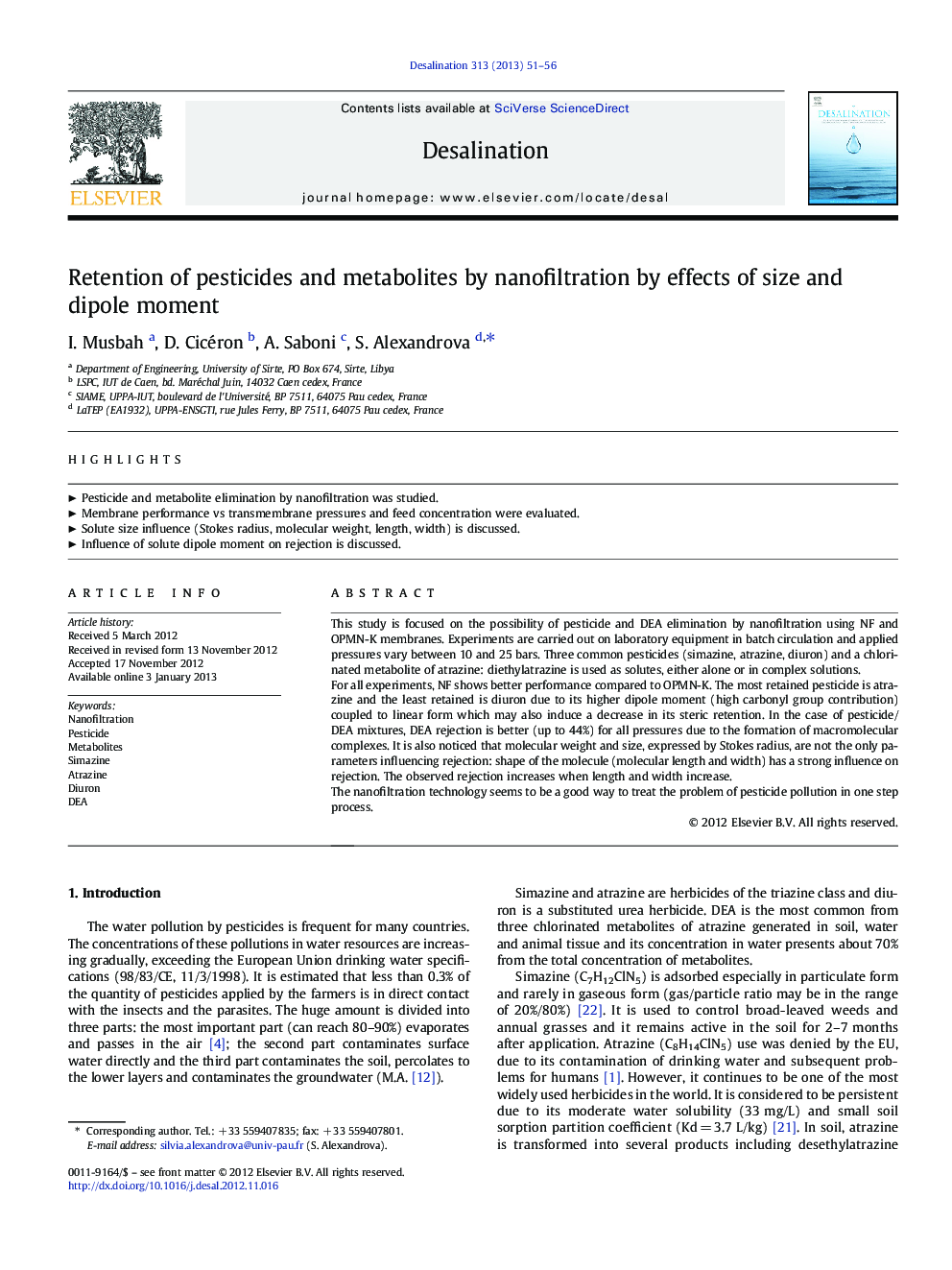| Article ID | Journal | Published Year | Pages | File Type |
|---|---|---|---|---|
| 623940 | Desalination | 2013 | 6 Pages |
This study is focused on the possibility of pesticide and DEA elimination by nanofiltration using NF and OPMN-K membranes. Experiments are carried out on laboratory equipment in batch circulation and applied pressures vary between 10 and 25 bars. Three common pesticides (simazine, atrazine, diuron) and a chlorinated metabolite of atrazine: diethylatrazine is used as solutes, either alone or in complex solutions.For all experiments, NF shows better performance compared to OPMN-K. The most retained pesticide is atrazine and the least retained is diuron due to its higher dipole moment (high carbonyl group contribution) coupled to linear form which may also induce a decrease in its steric retention. In the case of pesticide/DEA mixtures, DEA rejection is better (up to 44%) for all pressures due to the formation of macromolecular complexes. It is also noticed that molecular weight and size, expressed by Stokes radius, are not the only parameters influencing rejection: shape of the molecule (molecular length and width) has a strong influence on rejection. The observed rejection increases when length and width increase.The nanofiltration technology seems to be a good way to treat the problem of pesticide pollution in one step process.
► Pesticide and metabolite elimination by nanofiltration was studied. ► Membrane performance vs transmembrane pressures and feed concentration were evaluated. ► Solute size influence (Stokes radius, molecular weight, length, width) is discussed. ► Influence of solute dipole moment on rejection is discussed.
